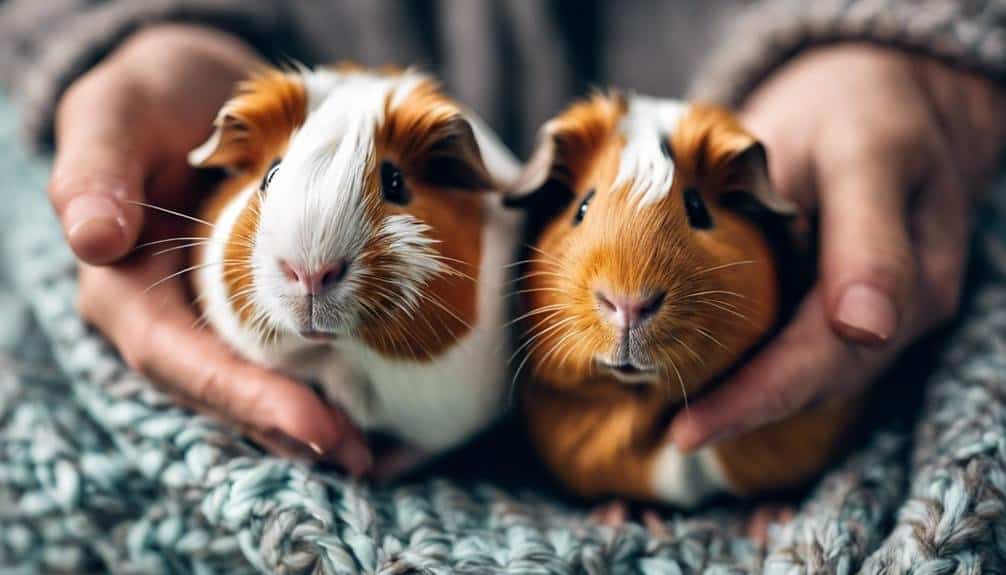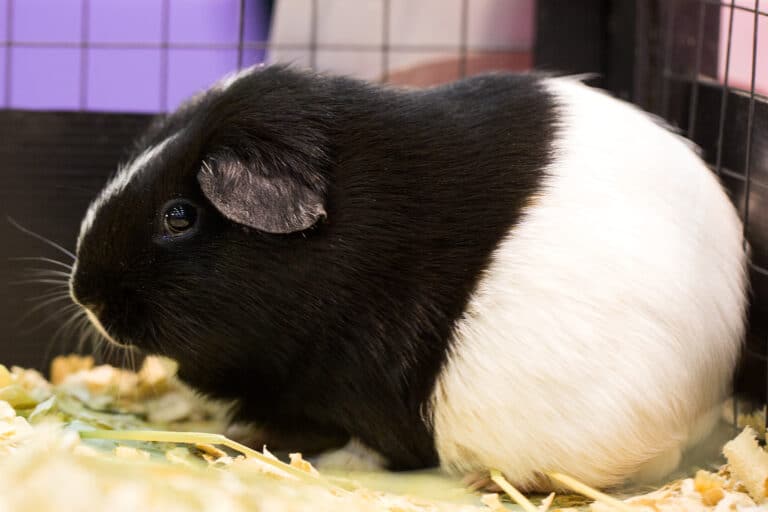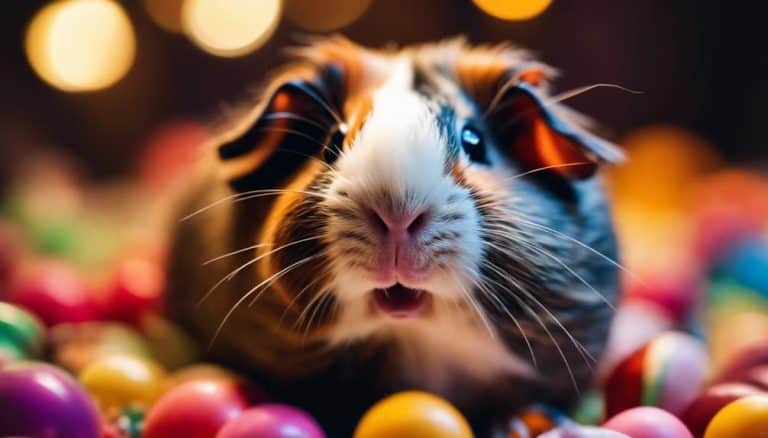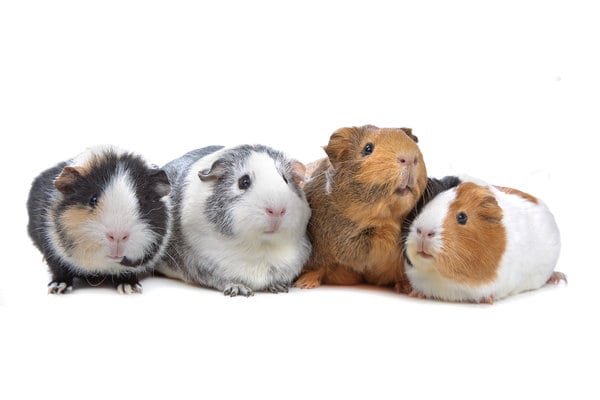Do Guinea Pigs Like Being Held?
When it comes to guinea pigs and their preferences for physical interaction, there’s a nuanced discussion to be had. While some of these adorable creatures may find comfort in being held, others might not share the same sentiment.
Understanding the factors at play and recognizing their individual cues is crucial in fostering a positive relationship with our furry companions.
So, how can we navigate this delicate balance and ensure our guinea pigs feel safe and secure in our hands? Let’s explore some insights together.
Factors Influencing Guinea Pig Holding Preferences
When considering the factors that influence guinea pig holding preferences, breed, personality, and past treatment experiences play significant roles. Each guinea pig has its unique personality, which influences its comfort level when being held. Male guinea pigs, for example, tend to be more outgoing and may be more receptive to being held compared to females. Trust and comfort with their owner also play a crucial role in a guinea pig’s willingness to be held. Building trust through patience, love, and positive interactions can help overcome any initial reluctance a guinea pig may have towards cuddling.
Past treatment experiences also impact a guinea pig’s holding preferences. If a guinea pig has had negative experiences in the past, they may be more hesitant to be held. It’s essential to consider these factors when trying to understand and respect a guinea pig‘s boundaries. By recognizing and addressing these influences, we can create a safe and comfortable environment for our guinea pig companions.
Tips for Holding a Guinea Pig
To ensure a positive and comfortable holding experience for your guinea pig, hold them close to your body for a sense of security and comfort. When holding your guinea pig, it’s essential to consider their need for safety and trust. Building a bond through activities like hand-feeding treats can make lap time more enjoyable for both you and your pet. Start with short intervals of holding to allow your guinea pig time to adjust, then gradually increase the duration. Remember, guinea pigs are prey animals, so avoid chasing or forcing interaction to prevent stress. If your guinea pig has had negative handling experiences in the past, they may take more time to feel comfortable. By spending time with your guinea pig and respecting their boundaries, you can create a positive environment for human interaction.
| Tips for Holding a Guinea Pig | ||
|---|---|---|
| Hold them close for security | Use trust-building activities | Start with short intervals |
| Avoid chasing or forcing | Give time to adjust | Respect boundaries |
Proper Handling Techniques for Guinea Pigs

Let’s ensure the proper handling techniques for guinea pigs support their well-being and comfort. When it comes to handling these adorable creatures, there are a few key practices to keep in mind:
- Support Properly: Always support the chest and hindquarters when lifting a guinea pig to prevent any potential injuries.
- Hold Horizontally: Holding a guinea pig horizontally can help avoid spine strain, ensuring a more comfortable experience for your furry friend.
- Sit Down: To reduce the risk of accidental drops, it’s best to sit down while holding a guinea pig, providing a secure environment for interaction.
Guinea pigs are social animals that enjoy cuddle time but remember, it takes time to build trust. Never force interaction or chase them to be held, as it can cause stress. Assess their willingness before attempting to lift or handle them, and use food to encourage positive associations with being held. By following these proper handling techniques, you can create a safe and enjoyable experience for both you and your guinea pig.
Signs of Guinea Pig Discomfort While Being Held
What’re the telltale signs that indicate a guinea pig is uncomfortable while being held?
When holding a guinea pig, it’s crucial to pay attention to their body language cues. Signs of discomfort may include squirming, wriggling, or attempts to escape your grasp. Additionally, vocalizations such as squeaking or chattering can indicate that the guinea pig is feeling uneasy.
If you notice your guinea pig stiffening up, trying to hide, or turning away, these are also signs of discomfort during handling. Excessive grooming or licking behaviors might signal stress or unease when being held.
Monitoring for signs of stress like rapid breathing or a tense body can help you gauge your guinea pig’s comfort level while in your arms. Remember, respecting your guinea pig’s boundaries and recognizing their signals is essential for fostering a positive and trusting relationship during handling.
Building Trust Through Holding Guinea Pigs

As guinea pig owners, we can build trust with our furry companions by gradually introducing them to being held in a reassuring and correct manner. When it comes to building trust through holding guinea pigs, there are a few key strategies to keep in mind:
- Handle Them Securely: Ensuring a secure grip when holding your guinea pig can help them feel safe and calm in your arms.
- Offer Positive Reinforcement: Providing treats and gentle praise during and after handling sessions can create a positive association with being held.
- Encourage Cuddle Time: Consistent and gentle handling practices can lead to guinea pigs seeking out cuddle sessions, strengthening the bond between you and your pet.
Conclusion
In conclusion, understanding the factors that influence guinea pig holding preferences and using proper handling techniques are essential for building trust and comfort with these gentle animals.
By respecting their individual preferences and gradually desensitizing them to being held, owners can enhance their bond with their guinea pigs.
Remember to approach interactions with empathy and patience, as creating a safe and positive environment is key to a happy and healthy relationship with these beloved pets.







